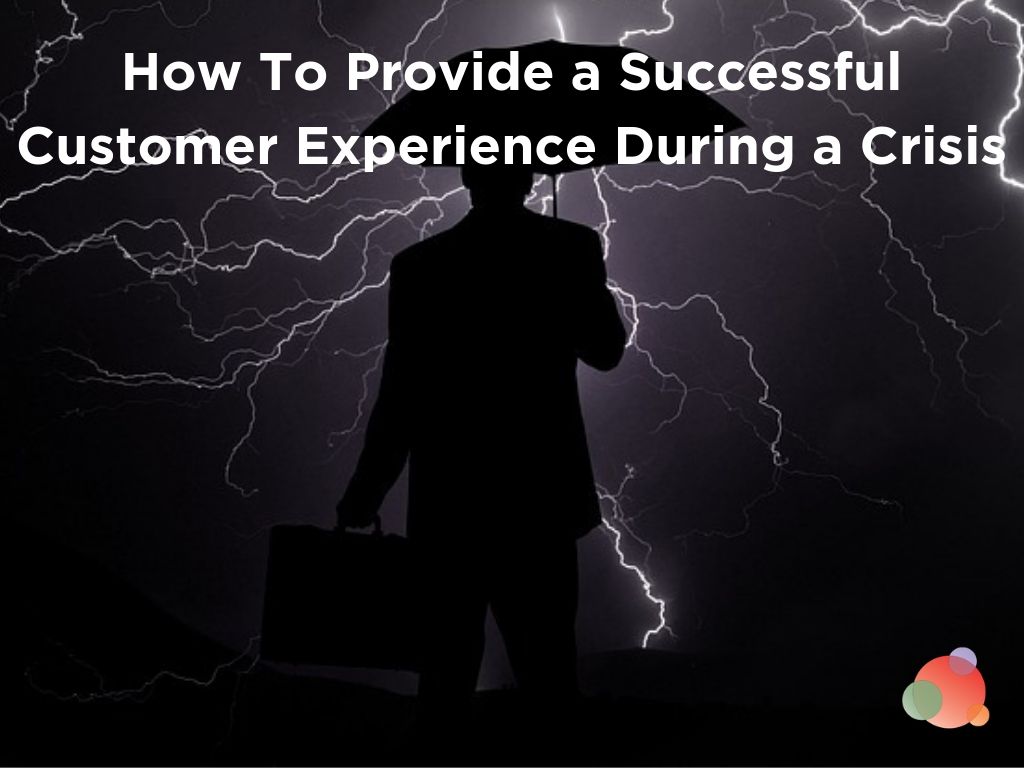 One expectation of business is no matter how hard you try to avoid them, bad things, or even just unexpected things, are going to happen.
One expectation of business is no matter how hard you try to avoid them, bad things, or even just unexpected things, are going to happen.
People will be disappointed.
Customers will be offended, something will explode (hopefully figuratively speaking), and a person will say something absolutely and horribly inappropriate.
You DO need to plan ahead, evaluate operations and communications, and put a process in place to keep these things to a minimum.
But even the best prepared and most thoughtful organizations will face times of crisis.
Times where they fail their customers and need to recover.
As communicators, it is our job to plan and direct the working pieces of that recovery.
Start with a Customer Experience Baseline
Every organization should provide quality customer experience as part of normal operations.
Customer experience needs to come from the inside out and be a part of the values, training, operations, and goals of each team member.
This is the baseline.
The norm a customer expects when working with your brand.
And by “norm”, I don’t mean average.
I simply mean it’s expected.
A customer experience win is when your clients assume excellence is part of your regular protocol.
Organizations like Zappos and Nordstroms come to mind when I think of companies that offer this high-level baseline expectation.
I’m sure you have some of your own.
But team members should also be trained to know when it’s important to push beyond the baseline and go out of their way to support their customers.
Likewise, they should be given the tools, flexibility, and capability to do so.
Have a Customer Experience Protocol
Customer experience is often described as having three components: process, people, and product.
A researched, tested, and consistently executed customer experience protocol is crucial to the “process” part of the equation.
Not having a protocol for team members to follow during both normal operations and times of crisis is like saying you want to lose five pounds or run a marathon, but not having a plan or timeline to do so.
It won’t happen.
Your protocol could be as simple as a flowchart or a set of guidelines.
Or it might be much more elaborate and detailed.
A lot will depend on your individual business, customers, and industry.
Elements of a Customer Experience Protocol
Whatever form it takes, your customer experience protocol should have the following elements:
- Goals and Values: This is the foundation of your process. Just like any successful strategy, tactics must tie into goals. That way, everyone is on the same page regarding the goals and vision for your organization’s customer experience. Interpretation of the steps in a protocol will be much easier to regulate, and delivery will be more consistent when everyone’s end goal is clear and in sync. Keeping goals and values as your north star will also empower employees to make smart choices when circumstances demand they go above and beyond.
- Understanding the Customer Journey: Your protocol should align with your customer journey. If you haven’t clearly outlined your customer journey, do that first by asking yourself these questions.
- Timelines: There must be a clear articulation of the timeframe for responses and resolution. This should include specifications as to when you might escalate. If you haven’t already read Jay Baer’s Hug Your Haters, the book provides research on what customers expect when it comes to response time across all communications channels.
- Event Conditional Protocol: “If XX, then YY,” should be outlined in your protocol. This is often when a flowchart is handy.
- Exceptions and Rewards: Exceptions are a VERY important part of customer experience. Your team members need to know when it’s OK to make an exception to preserve or support an excellent customer experience.
This is particularly true in a crisis or stressful situation.
You need to outline what, when, and how exceptions are processed in your protocol.
It must also empower employees to act without the fear of repercussions.
The Importance of Empathy in Customer Experience
The simplest, most difficult, yet most important part of providing a quality customer experience is the human element.
This becomes even more important during times of crisis.
This is the “people” part of the people, process, product equation laid out above.
It is also why clearly outlining the goals and vision for our customer experience is crucial.
In the end, team members need to understand that customer experience is about humans working with humans.
Understanding their needs, concerns, and stresses.
Listening to their frustrations and letting people know they are heard.
Which is different than just responding with a cut and paste message.
Team members need to be armed with response messages and a protocol for various situations.
And then they need to apply those with empathy by clearly addressing the specific concern or frustration being shared.
Emotional Intelligence is Part of Proper Crisis Protocol
There is a difference between a response that is “technically” correct and a correct response.
This nuance is extremely important when it comes to customer experience in a crisis.
It requires emotional intelligence, not just diligence.
Although both are important.
Brands that define themselves by their customer experience are able to master that nuance.
They then hire and train to effectively execute it.
This is something that must be consistently articulated to the entire team.
From the people who manage front line communication to the leadership team.
In a time of crisis, people remember those who take the time to care.
Those who listen to their struggles and show true empathy and understanding of their frustrations.
In the end, an effective customer experience strategy requires one part technical application, one part consistent process, and 10 parts empathy and communication.
How would you describe what makes an excellent customer experience? Share your stories in the comments below.
Image by Gerd Altmann from Pixabay